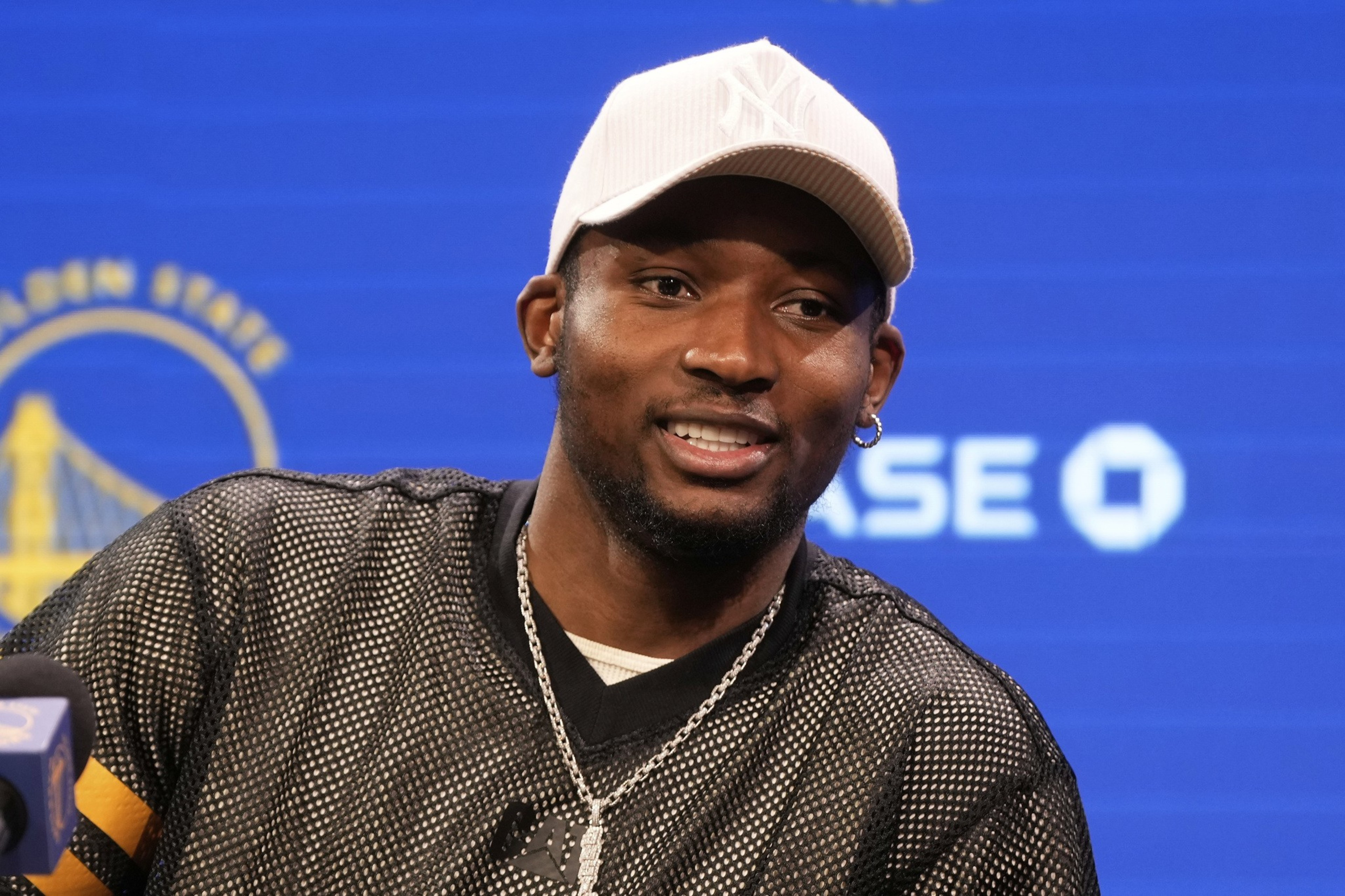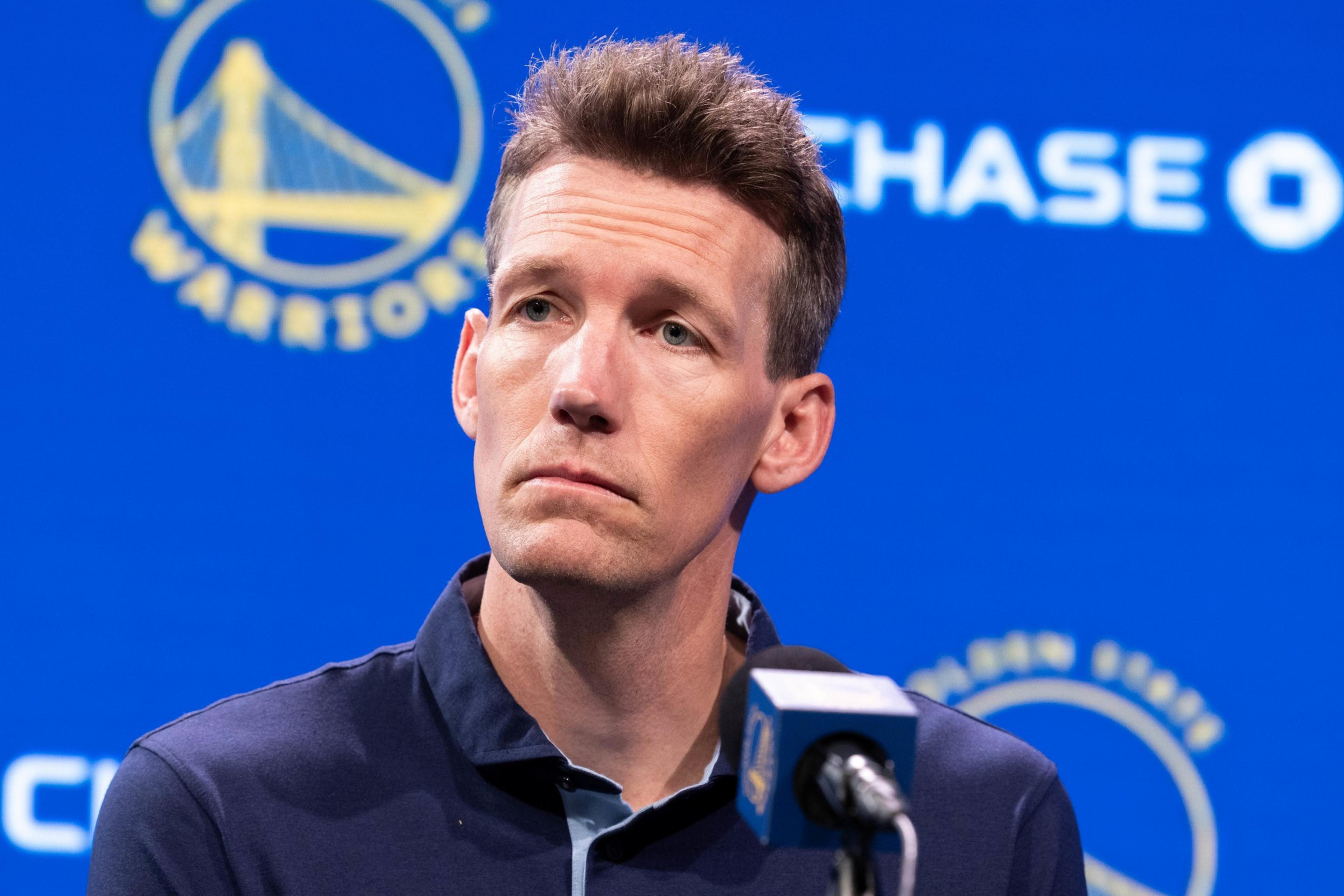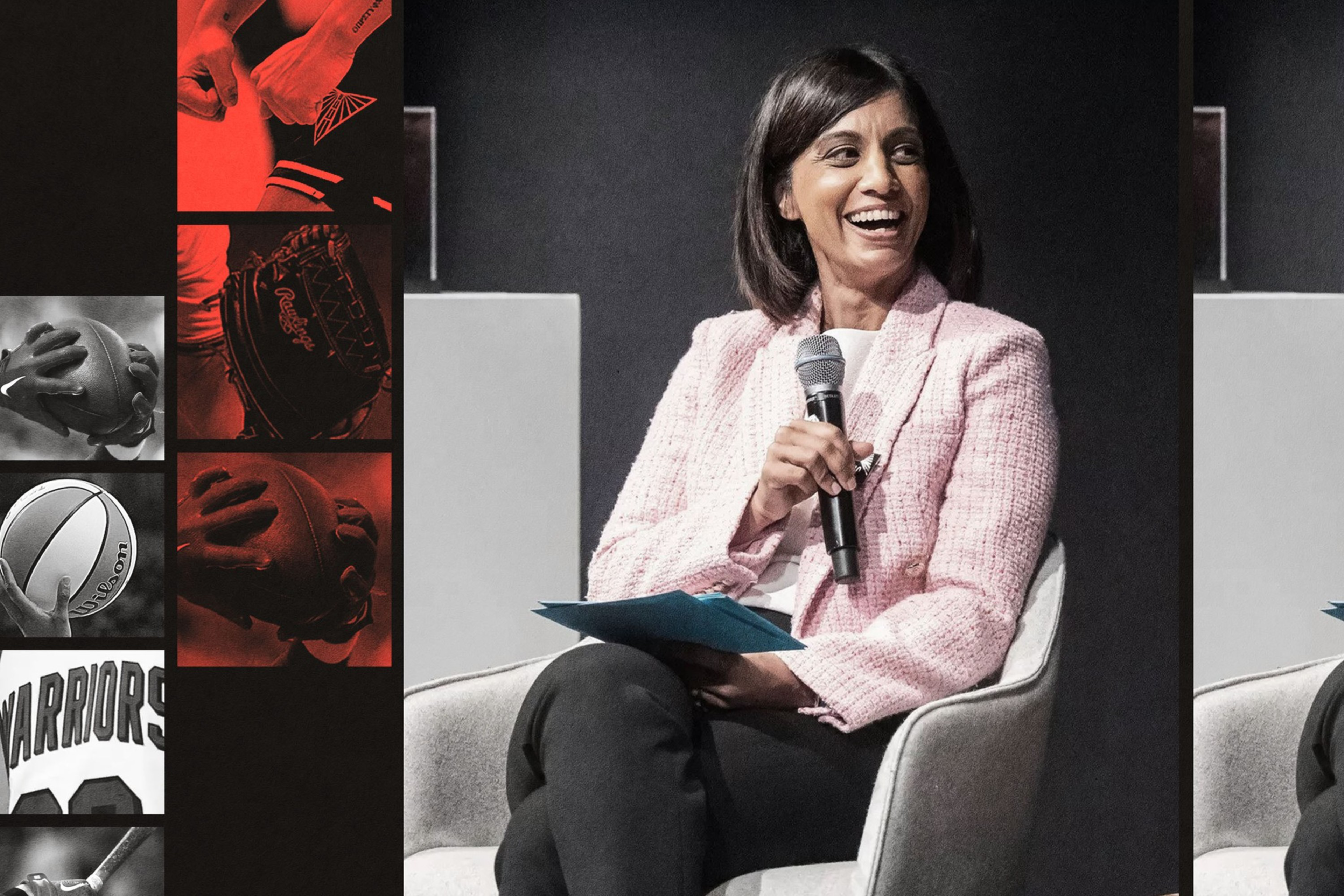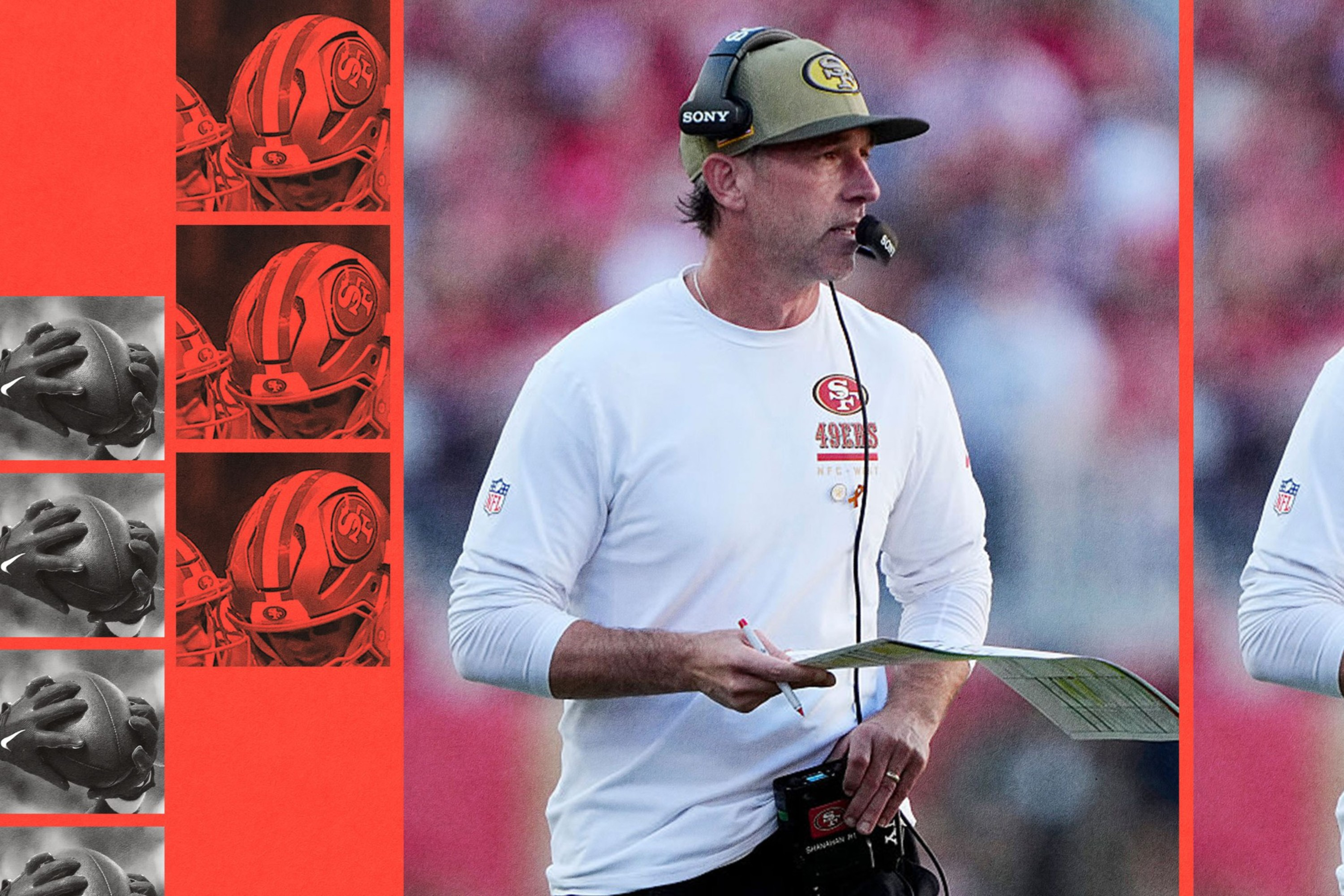The long, winding road that Jonathan Kuminga has traveled with the Warriors has no end in sight.
Kuminga, the promising 22-year-old wing, remains unsigned as his free agency process threatens to drag into August. The latest, per ESPN, (opens in new tab) is that he declined Golden State’s two-year, $45 million contract offer.
The sides appear dug in, prepared to extend talks deeper into the summer. There isn’t serious momentum toward a resolution at the moment, per a source familiar with the negotiations.
Kuminga’s checkered history of being in and out of Steve Kerr’s rotation led him to test his leverage as a restricted free agent, and a tight market that has squeezed everyone but superstars has responded in kind.
Other restricted free agents Josh Giddey, Cam Thomas, and Quentin Grimes are at similar standstills with their incumbent teams.
But Kuminga in particular looms as a domino. Because of the roster-building ramifications stemming from his situation, the Warriors are the only team yet to make an offseason transaction excluding the draft.
Once the Kuminga saga is resolved, one way or another, expect a flurry of free-agent additions. But when — and how — that happens remains unclear.
Here are three potential options.
The market value deal
Santi Aldama inked a three-year, $52.5 million deal with the Grizzlies. Nickeil Alexander-Walker joined the Hawks in a sign-and-trade on a four-year, $60 million contract. Myles Turner dramatically left Indiana for a four-year, $107 million pact with the Bucks.
In terms of potential, Kuminga is on the upper echelon of that group. In terms of what he has proved, he’s firmly in their range. But gone are the days of dishing out nine-figure deals to just about any early-20s wing.
Aldama ($17.5 million average annual value), Alexander-Walker ($15 million AAV), and Turner ($26.7 million AAV) reflect where the market is this year, as teams grapple with the NBA’s prohibitive second apron system.
The market would suggest that a fair deal this summer for Kuminga, then, would be somewhere between $15 million and $27 million annually.
Hence the Warriors’ reported offer of $45 million over two years ($22.5 million AAV). Notably, ESPN reported (opens in new tab)that the Warriors have insisted on making the second year a team option and excluding a no-trade clause — both tools that would cut into Kuminga’s autonomy.

Last year’s comparable market-value deal was Jalen Green, who agreed to a three-year, $105 million extension (with a player option in Year 3) with Houston. Although the league-wide landscape has changed since last summer, that contract structure would still make sense for both sides because of the high earning potential and valuable salary slot for trade flexibility.
That’s why Kuminga’s agent, Aaron Turner of Verus Sports, reportedly presented the framework of a three-year, roughly $82 million proposal ($27.3 million AAV). That’s the Green arrangement: Get the bag but give the team valuable optionality. (Houston traded Green as part of the blockbuster to acquire Kevin Durant.)
Perhaps there’s a compromise to be struck between $82 million over three years and 2/$45 million. Neither framework was pulled out of thin air. Either contract could be traded before the Feb. 6 deadline — unencumbered by offseason restrictions like base-year compensation — an outcome both Kuminga and Golden State would be open to. Each are relatively market-appropriate and would make sense for both sides in a vacuum.
But this isn’t a normal situation. This is a player who was booted from the Warriors’ rotation in the biggest moments of the season one week, then looked like the best scorer in a playoff series the next. Someone whose coach has openly questioned his fit next to the team’s stars and has expressed a desire to stretch his wings as the focal point of an offense before he has consistently excelled in the margins.
Restricted free agency can be tricky. Kuminga’s track record makes it even more complicated.
‘Bet on myself’
Kuminga tagged his agent Wednesday in an Instagram story captioned, “I’ll bet on myself all day.”
The qualifying offer is on his mind.
The qualifying offer — worth $7.9 million for Kuminga — is essentially a formality that teams extend to initiate restricted free agency. But a player can accept the contract and then become an unrestricted free agent the following summer.
League sources have been skeptical that Kuminga would actually pick up the qualifying offer for various reasons, but it is the mechanism that would give him the most leverage.
Over the last four years, Kuminga’s name has surfaced in trade rumors, he’s been in and out of Kerr’s rotation, and he has toggled between roles his entire career. If he values control over his own destiny, the qualifying offer represents the most self-determination.
It’s also the riskiest path forward.
One notable restricted free agent to accept the QO in the past was Nerlens Noel. He reportedly rejected a four-year, $70 million offer to bet on himself. Instead, he injured his thumb and only made $27 million over the rest of his career.
That cautionary tale represents the most extreme risk Kuminga would be taking by accepting the QO. There's a real possibility of sacrificing both short- and long-term money.
But there would be risks for the Warriors, too. The qualifying offer comes with a built-in no-trade clause, meaning the Warriors wouldn’t be able to flip Kuminga ahead of the trade deadline. And given their history, he’d likely walk for nothing at season’s end. In that scenario, the Warriors would be used as an example in an asset management course.

In the moment, though, the Warriors would get a valuable wing who can step up when Jimmy Butler and Steph Curry are out during the regular season — and retain him on the cheap. If Kuminga picks up the qualifying offer, Golden State would have plenty of room to fill out the roster with players such as Al Horford, De’Anthony Melton, and other veterans.
During negotiations, the qualifying offer is Kuminga’s strongest tool. If his side eventually tells the Warriors they’re only interested in either a sign-and-trade out of Golden State or picking up the qualifying offer, the Warriors could be compelled to accept a trade package they were otherwise unenthused about.
The qualifying offer has an Oct. 1 deadline, right around when training camp commences. Though even that deadline can be extended further.
Occam's razor suggests that the qualifying offer is more of a bargaining device than a realistic option for Kuminga. A big-money, one-year deal would be more mutually beneficial than a qualifying offer. Maybe a one-plus-one worth around $20 million annually with a player option gets it done.
But that could change if Kuminga values his career autonomy over all.
If Kuminga returns, under a true extension or a qualifying offer, it's going to be tense. The past four seasons have made him and the Warriors accustomed to that.
A fresh start
In a hypothetical sign-and-trade, the Warriors acquire a rotation piece or two who fit into the system easier than Kuminga, and the young forward receives a fresh start with a team prepared to run more offense through him.
A win-win.
Only that hypothetical hasn't appeared to manifest itself in practice.
Phoenix and Sacramento have been the two most aggressive teams in pursuit of Kuminga in sign-and-trade scenarios, per multiple reports. The Suns don't have any first-round picks to trade and it wouldn't make much sense for the Kings to part with young complementary players such as Keon Ellis and Keegan Murray.

Kuminga wants to find a basketball situation that allows him to flourish. In Golden State, his fit next to Butler was problematic (-6.1 net rating in the 118 minutes they shared) and his mistakes are magnified in a win-now environment. The Warriors run one of the more complicated offenses in the league, and Kuminga's style may work better in something more akin to a five-out scheme.
Yet in a strange way, Kuminga’s skill set is exactly what the Warriors need. No one else on the team can get downhill and consistently finish at the rim like he can. And his positional size at 6-foot-8 is also helpful when trying to match up with the most dangerous wings in the West, including Luka Doncic, LeBron James, Kawhi Leonard, and Jalen Williams. Kuminga had moments of on-ball defensive brilliance against Kevin Durant and Anthony Edwards last year.
The swiftest way to end this saga would be a sign-and-trade. That would chart Kuminga's career on a new course, avoid the awkwardness of bringing him back into the fold after more tumult, and perhaps give the Warriors more rotational depth (at the cost of high-end potential).
But striking a deal like that would be complicated. It would require a team not only willing to give up assets the Warriors want, but also willing to sign Kuminga to a deal that interests him. And they'd also need to dance around the base-year compensation rule that allows the Warriors to take back half of Kuminga's first-year salary (plus apron restrictions on salary matching and aggregating, if applicable).
The difficulties of a sign-and-trade make a Kuminga return the path of least resistance — but only if there's mutual interest in a reunion.




